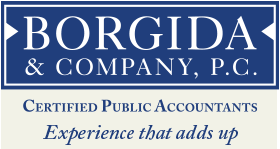Whether you receive an asset from inheritance or from a gift can have significant tax impact when this asset is sold.
Inherited Asset
For an inherited asset you generally take this asset over at the Fair Market Value at the Date of Death. This value would be listed on the probate inventory. Additionally for a Connecticut decedent it would be listed on Connecticut Estate and Gift Tax Form CT-706-709. If would also appear on the Form 709, United States Gift (And Generation Skipping Transfer) Tax Return if the estate filed one. Any of these documents could be requested from the executor of the estate.
The holding period of assets that are inherited are considered to be long-term assets.
For an asset that is sold within a reasonably short time period from when it was distributed by an estate should have a relatively small tax exposure to the beneficiary. Because the beneficiary took over the asset at the fair market value and sold it within a short time period this should limit the tax exposure to the beneficiary. If the asset was rapidly appreciating then yes, there would be a capital gains tax. The good news however is that this would be treated as long term capital gains.
Gift Received
When you receive a gift, you normally take this asset over at the donor’s cost basis. This is generally what they paid for the asset. For example if your father paid $10 a share for 1,000 shares of stock the cost basis would be $10,000.
The cost basis could be different than what the original purchase price was. For example if your father invested $10,000 in a mutual fund many years ago. However he had all of the dividends and capital gains reinvested through the years. Let’s assume that this was $3,000. The total cost basis would be $13,000 and would be your cost basis.
If your basis is the donor’s basis then your holding period begins when the donors holding period began.
The exception to taking over property received via gift at the donor’s cost basis is if the property is sold by the recipient for a loss. If this is the case the fair market value of the gift is less than the donors cost basis. Under this situation the recipient takes over the property at the fair market value of the gift.
Another adjustment is for gifts made after 1976. If a gift was made after 1976 and a gift tax was paid on this gift, then the gift tax paid is added to the donor’s basis.
Photo by StockFreeImages.com



